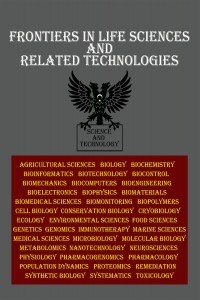
Frontiers in Life Sciences and Related Technologies
Yazarlar: Mehmet Emin URAS
Konular:Genetik ve Kalıtım
DOI:10.51753/flsrt.843166
Anahtar Kelimeler:3D structure,Bioinformatics,Coronavirus,COVID-19,SARS-CoV-2,Viral Proteins
Özet: The world has been encountered to one of the biggest pandemics that causing by severe acute respiratory syndrome coronavirus 2 (SARS-CoV-2). SARS-CoV-2 is placed in the Beta-CoV genus in the Coronaviridae family. N protein is one of the crucial structural proteins of SARS-CoV-2 that binds to the genome thereby generating helical ribonucleoprotein core. It is involved in viral transcription/replication, translation, and viral assembly after entering the host cell through interacting with host proteins. N protein sequences of SARS-CoV-2 and taxonomically related CoVs are examined using bioinformatics tools and approaches including sequence alignment, sequence and phylogenetic analyzes, and predicting of putative N-Glycosylation and phosphorylation positions and also predictions and comparative analyzes are performed on 3D structures of N proteins from SARS-CoV-2 related CoVs through using of some of applied bioinformatics analyzes. Results of mega BLAST search revealed that the most similar N protein sequence to SARS-CoV-2 is Bat-CoV RaTG13 N protein sequence in the taxonomically related CoVs. SARS-CoV-2 is grouped with SARS, pangolin, civet and bat CoVs (RATG13, SL ZC45 and SL ZXC21) in N protein, nucleotide and protein based ML phylogenetic trees. Some of SARS-CoV-2 N proteins were showed divergence from other SARS-CoV-2 N proteins analyzed due to amino acid substitutions detected in SARS-CoV-2 N proteins samples in phylogenetic trees. The highest amino acid substitutions were detected in Richmont/USA (QJA42209.1) and Greece (QIZ16579.1) samples, with 2 and 3 place substitutions, respectively. By domain analyzes, three domains were detected as Corona_nucleocora (Pfam), N terminal CoV RNA-binding domain (HAMAP) and C terminal N protein dimerization domain (HAMAP). Possible N-glycosylation positions of SARS-CoV-2 N protein were predicted at two positions. Assessments of possible serine, threonine and tyrosine phosphorylations were found to be at 100 positions, 34 of them were higher than 80% possibility. 3D structure analysis based on TM scores revealed that although the results of 3D structure analysis were shown consistency with the taxonomy of the CoVs, the 3D structures of SARS-CoV-2 N protein and taxonomically related CoVs were not at the same fold.
Dergi editörleri editör girişini kullanarak sisteme giriş yapabilirler. Editör girişi için tıklayınız.